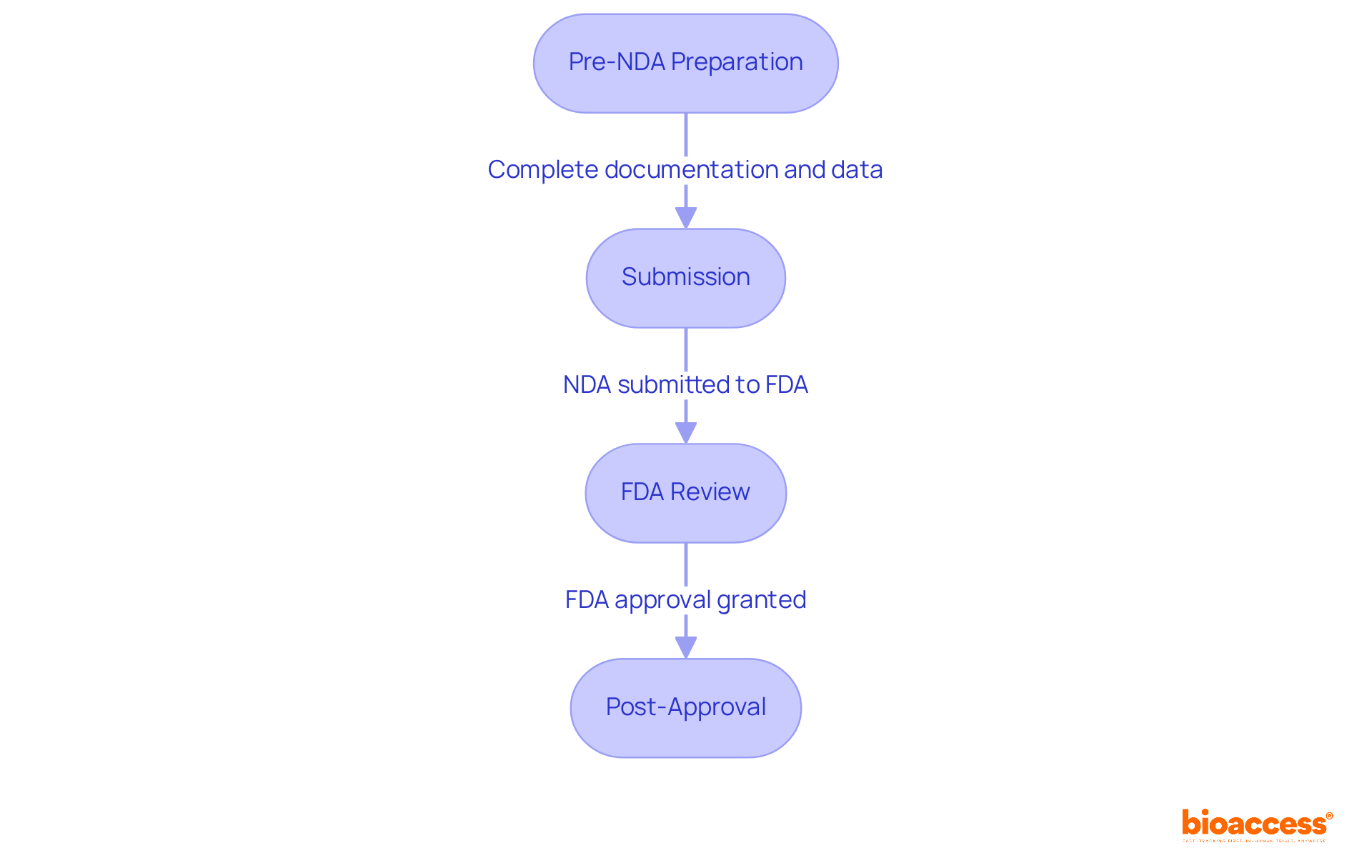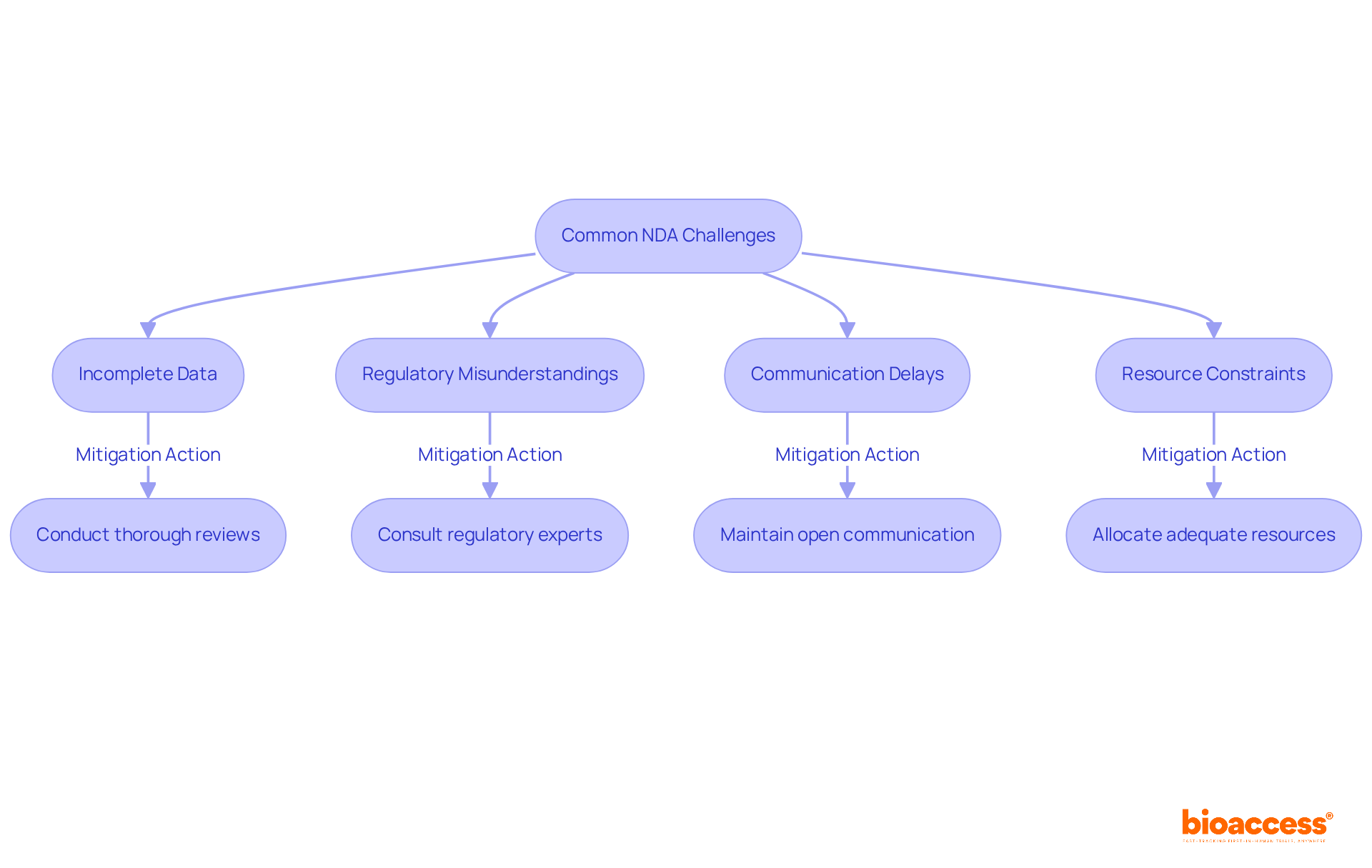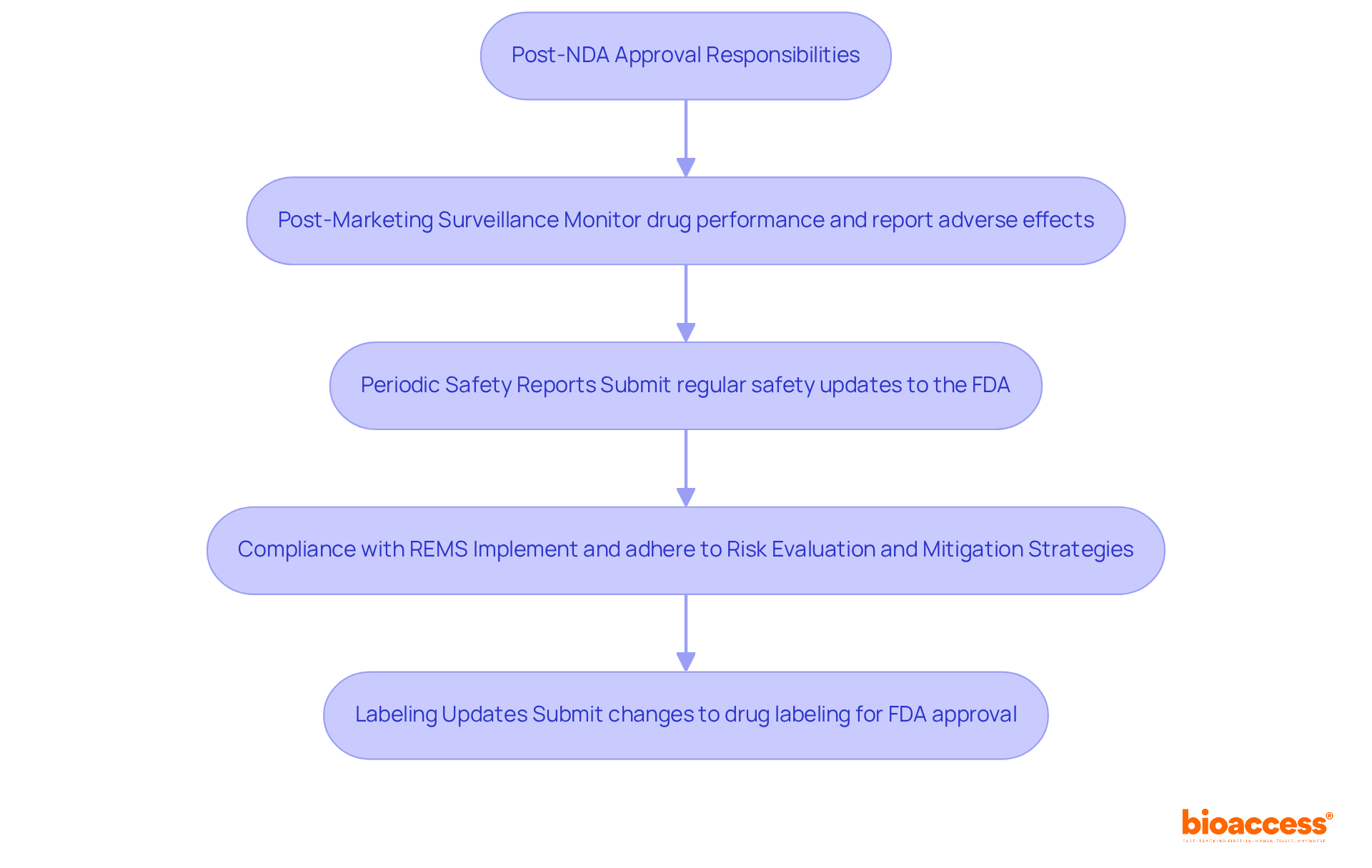


The article serves as an authoritative guide to mastering the NDA application process, detailing essential steps from pre-NDA preparation to post-approval compliance. It underscores that a successful application necessitates:
These elements are vital for ensuring the drug's safety and efficacy in the market, establishing a solid foundation for clinical research professionals.
Navigating the complexities of the NDA application process is a daunting task for pharmaceutical companies eager to bring their innovations to market. This guide provides a comprehensive roadmap, detailing each critical phase from pre-NDA preparation to post-approval compliance. Stakeholders will be well-equipped to tackle this intricate journey.
However, numerous challenges lurk at every turn—such as incomplete data and regulatory misunderstandings. How can applicants streamline their submissions and enhance their chances of success?
The NDA application procedure is crucial for introducing a new pharmaceutical product to the market. It necessitates a comprehensive submission to the FDA, demonstrating the drug's safety and efficacy for its intended use. Understanding this process involves recognizing its key phases:
Pre-NDA Preparation: This initial phase concentrates on gathering all necessary clinical data, ensuring compliance with regulatory requirements, and meticulously preparing documentation. Companies often engage specialized support, such as comprehensive clinical trial management services, to enhance data quality and streamline this phase. Services like feasibility studies, site selection, compliance reviews, trial setup, and project management can lead to faster approval times and improved data quality, thereby reducing the risk of rejection or delays.
Submission: The NDA is formally submitted to the FDA, encompassing detailed information about the drug's efficacy, safety, labeling, and manufacturing processes. The document must comply with the eCTD format, which enhances efficiency and communication with the FDA. The FDA has 60 days to conduct an initial evaluation to ascertain if the application is complete; if it is not, a Refuse-to-File (RTF) letter may be issued.
FDA Review: The FDA conducts a thorough review of the application, typically taking 10 to 12 months for standard reviews. During this period, the agency may request additional information or clarification, which can impact the overall timeline. If the drug qualifies for Priority Review, this timeline can be shortened to 6 months. A multidisciplinary review team, including specialists in clinical data, pharmacology, toxicology, and manufacturing, assesses the proposal. Chemistry, Manufacturing, and Controls (CMC) reviewers play an essential role in evaluating drug formulation and production methods to ensure adherence to Good Manufacturing Practices (GMP).
Post-Approval: Upon approval, the drug can be marketed, but ongoing compliance and reporting are mandatory to ensure continued safety and efficacy. The FDA monitors approved drugs through post-marketing surveillance, which includes evaluating real-world usage and adverse event reports. Additionally, if deficiencies are identified during the review, the FDA may issue a Complete Response Letter (CRL) outlining the necessary information to address before approval can be reconsidered.
Familiarizing oneself with these stages is essential for simplifying your NDA application and enhancing your odds of a successful filing. Engaging in pre-filing meetings with regulatory bodies can also clarify potential issues and improve the filing experience.

A successful NDA submission must encompass several critical components that are essential for a thorough review:
Ensuring that each of these components is meticulously prepared and presented in the nda application will significantly enhance the likelihood of a smooth review process.

To navigate the NDA submission process effectively, it is essential to follow these steps:
By adhering to these steps, you can simplify your application procedure and significantly enhance your likelihood of approval.

Many applicants face significant challenges during the NDA application procedure. Addressing these common issues is crucial for a successful submission:
By proactively addressing these challenges, you can significantly enhance the likelihood of a successful NDA application.

Once your NDA is approved, several responsibilities must be managed to ensure compliance:
By effectively managing these post-submission responsibilities, you can maintain compliance and support the drug's success in the market, leveraging the expertise of regulatory affairs leaders to navigate complex requirements.

Mastering the NDA application process is essential for any pharmaceutical company aiming to introduce a new product to the market. Understanding each phase—from pre-NDA preparation to post-approval responsibilities—enables applicants to navigate this complex landscape more effectively. A well-organized approach not only streamlines submission but also enhances the chances of a successful outcome.
Key components such as:
form the backbone of a successful NDA submission. Addressing common challenges, such as incomplete data and regulatory misunderstandings, is crucial for avoiding delays. By following a structured step-by-step process and maintaining open communication with the FDA, applicants can significantly improve their submission experience.
Ultimately, the NDA application process transcends mere approval; it is about ensuring the safety and efficacy of new drugs for the public. Engaging with regulatory experts and continuously monitoring post-approval responsibilities fosters compliance and contributes to the drug's success in the market. Embrace these insights to navigate the NDA application landscape with confidence and clarity.
What is the purpose of the NDA application process?
The NDA application process is crucial for introducing a new pharmaceutical product to the market, requiring a comprehensive submission to the FDA to demonstrate the drug's safety and efficacy for its intended use.
What are the key phases of the NDA application process?
The key phases include Pre-NDA Preparation, Submission, FDA Review, and Post-Approval.
What happens during the Pre-NDA Preparation phase?
During the Pre-NDA Preparation phase, companies gather necessary clinical data, ensure compliance with regulatory requirements, and prepare documentation. They often engage specialized support to enhance data quality and streamline the process.
What does the NDA submission entail?
The NDA submission involves formally submitting detailed information about the drug's efficacy, safety, labeling, and manufacturing processes to the FDA, complying with the eCTD format.
How long does the FDA have to conduct an initial evaluation of the NDA?
The FDA has 60 days to conduct an initial evaluation to determine if the application is complete. If incomplete, a Refuse-to-File (RTF) letter may be issued.
What is the typical timeline for the FDA review process?
The FDA review process typically takes 10 to 12 months for standard reviews, but if the drug qualifies for Priority Review, this timeline can be shortened to 6 months.
What roles do the multidisciplinary review team play during the FDA review?
The multidisciplinary review team, including specialists in clinical data, pharmacology, toxicology, and manufacturing, assesses the NDA. Chemistry, Manufacturing, and Controls (CMC) reviewers evaluate drug formulation and production methods for adherence to Good Manufacturing Practices (GMP).
What happens after a drug receives FDA approval?
After approval, the drug can be marketed, but ongoing compliance and reporting are mandatory to ensure continued safety and efficacy. The FDA monitors approved drugs through post-marketing surveillance.
What is a Complete Response Letter (CRL)?
A Complete Response Letter (CRL) is issued by the FDA if deficiencies are identified during the review, outlining the necessary information to address before approval can be reconsidered.
What are the critical components of a successful NDA submission?
Critical components include Clinical Data, Labeling Information, Manufacturing Information, Nonclinical Data, and Risk Evaluation and Mitigation Strategies (REMS), if applicable.